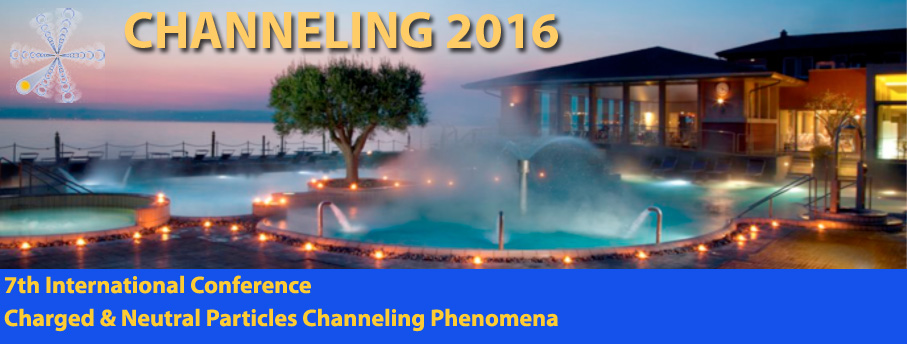Speaker
Prof.
Vladislav Syshchenko
(Belgorod State University)
Description
One of the ways to describe diffraction and transition radiation (DR and TR) is the application of the boundary conditions to the solutions of Maxwell equations on the boundary of two media. It becomes evident that the boundary conditions could be satisfied only after addition to the solutions of Maxwell equations with the charge and current of the passing particle the solution of free Maxwell equations that correspond to the radiation field.
The conditions on the boundary between vacuum and ideal conductor could be satisfied in some cases via introduction of one or more fictive charges along with the real charged particle; this approach to electrostatic problems is known as the method of images (see, e.g., [1]). Namely the method of images had been used in the pioneering paper [2] where TR on a metal plane had been predicted. The method of images had been used also in [3] for consideration of TR under passage of the particle through the center of the ideally conducting sphere.
The radiation arising under motion of the particle with the arbitrary impact parameter to the center of the conducting sphere as well as along the axis of the periodic string of such spheres is considered in the present report. The spectral-angular density of the radiation is computed as well as the radiation spectrum integrated over the radiation directions. Note, particularly, that the spectrum od DR on the metal sphere possesses the maximum under $b\omega/v \approx 2.35$, where $b$ is the impact parameter, $\omega$ is the radiation frequency and $v$ is the incident particle's velocity. So, for the particle with $v=0.1 c$ moving by the sphere with radius $R=20$ nm under the impact parameter $b$ close to $R$ the radiation intensity maximum will lie in the visible domain.
This research is partially supported by the grant of Russian Science Foundation (project 15-12-10019).
\vspace{1em}
\noindent {\bf References}
{\footnotesize \noindent [1] J.D. Jackson, Classical Electrodynamics, Wiley, New York, 1999.
\noindent [2] V.L. Ginzburg, I.M. Frank, J. Phys. USSR 9 (1945) 353.
\noindent [3] G.A. Askaryan, JETP 29 (1955) 388 {\it (in Russian)}.
}
Author
Prof.
Nikolai Shul'ga
(Akhiezer Institute for Theoretical Physics of NSC KIPT)
Co-authors
Ms
Elvira Larikova
(Belgorod National Research University)
Prof.
Vladislav Syshchenko
(Belgorod State University)

